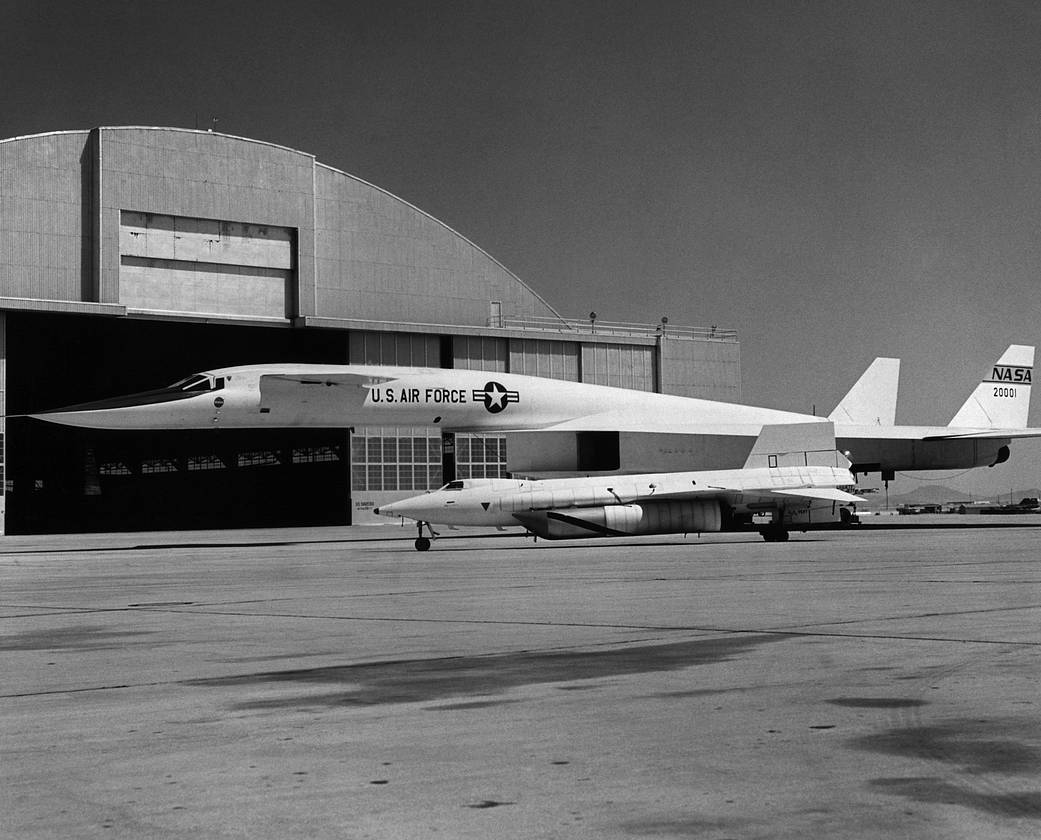E-17242
The X-15A-2 with drop tanks and ablative coating is shown parked on the NASA ramp in front of the XB-70. These aircraft represent two different approaches to flight research. The X-15 was a research airplane in the purest sense, whereas the XB-70 was an experimental bomber intended for production but diverted to research when production was canceled by changes in the Department of Defense’s offense doctrine.
The X-15A-2 had been modified from its original configuration with a longer fuselage and drop tanks. To protect it against aerodynamic heating, researchers had coated it with an ablative coating covered by a layer of white paint. These changes allowed the X-15A-2 to reach a maximum speed of Mach 6.7, although it could be sustained for only a brief period.
The XB-70, by contrast, was designed for prolonged high-altitude cruise flight at Mach 3. The aircraft’s striking shape-with a long forward fuselage, canards, a large delta wing, twin fins, and a box-like engine bay-allowed it to ride its own Mach 3 shockwave, so to speak. A joint NASA-Air Force program used the aircraft to collect data in support of the U.S supersonic transport (SST) program, which never came to fruition because of environmental concerns.August 4, 1967NASA Photo› Fleet Description
2 min read



























